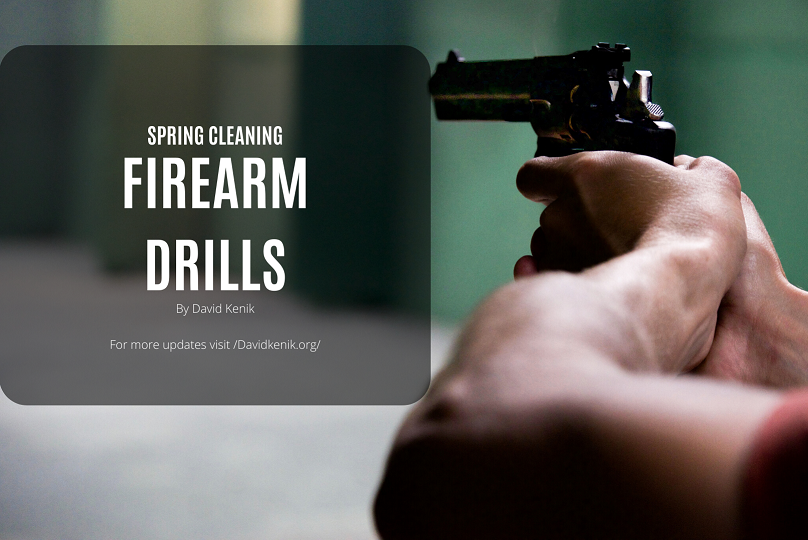Spring is here and with it spring cleaning. This means dusting out the cobwebs and refreshing routines. In the sense of firearms, it means refreshing training with good practice drills and properly servicing the weapon(s). If winter weather has been the reason for an absence from the range, now is a very good time to get out there and get familiar again with how firearms will function in the home and what the spread of ammunition will be at what distance, depending on the firearm. Following is coverage on the shotgun, rifle or carbine, and the pistol.
For a shotgun, measure the longest distance that a shot might be placed in the home. Assuming at least 45 feet, shoot from the 15-yard line at the range into a silhouette target and measure the spread of the shot. This measurement reveals how much spread in the home to expect so that one may be more cognizant of potential unintended targets in the home. From here, advance to the ten, seven and three-yard lines tracking the spread of each shot with every advance. This provides a good idea of the spread pattern to expect in the home. Contrary to popular belief, the spread will get tighter as the distance closes. Shotguns are not the hallway clearing instruments that they’re rumored to be, so keep shots on target.
The process is the same for a rifle or carbine, except instead of shot spread the purpose of this drill is to ensure that the point of aim from the front sight post or optic agrees with the point of impact. An optic typically sits about three inches above the barrel and as the distance to the target closes, the offset from point of aim to point of impact increases. Close the distance each time just like with the shotgun to verify the point of aim at each distance.
In regards to the pistol, still, abide by the same training methodology as with the shotgun and rifle/carbine and ensure that rounds stay on target. As the distance closes, try to shoot in pairs. Consider ending with a failure drill, which is two rounds to the chest and one to the head, repeating in quick succession until confidence is built that this can be done quickly and precisely. About fifty rounds should be expended at the conclusion of this.
When finished, perform thorough maintenance and cleaning on the firearms. Replace any old ammunition and if necessary, replace magazines and batteries to ensure that the firearms and attackers will not fail when most needed.
